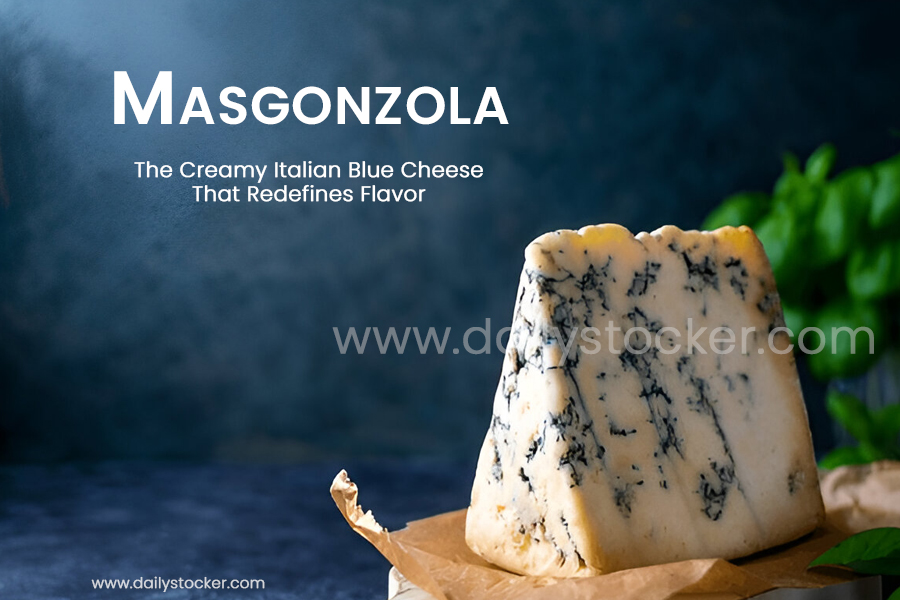Grouse Cheese – History, Flavor, Benefits, Recipes & Complete Guide
Grouse cheese is a semi-hard to hard cheese, traditionally crafted in rural Europe and North America, known for its creamy center, nutty undertones, and rich texture. Unlike mass-produced cheeses, grouse cheese tells a story of tradition, resilience, and artisanal craft. Made using simple ingredients — milk, rennet, and cultures — it embodies the purity of farmhouse dairy products.
This article dives deep into grouse cheese, exploring its origins, production, taste, health benefits, culinary uses, and why it deserves a place in every kitchen.
History of Grouse Cheese
Early European Traditions
The origins of grouse cheese can be traced to small European farms centuries ago. In regions where winters were harsh, cheesemaking became a vital method for preserving milk. Grouse cheese developed as one of these traditional cheeses, valued for its ability to last months without refrigeration. Farmers passed down techniques from one generation to the next, ensuring consistency in taste and quality.
North American Adaptations
European settlers carried their cheesemaking knowledge to North America. Adapting to new climates and dairy resources, they created regional versions of grouse cheese. Today, North American artisanal cheesemakers blend old-world methods with modern practices, producing varieties that rival their European counterparts.
How Grouse Cheese is Made
Ingredients Used
The foundation of grouse cheese is fresh, high-quality milk — most commonly from cows, but sometimes from goats or sheep. To this, cheesemakers add:
- Rennet: An enzyme that helps milk curdle.
- Starter Cultures: Beneficial bacteria that aid in fermentation.
- Salt: For preservation and flavor enhancement.
The Cheesemaking Process
- Milk Preparation: Fresh milk is gently heated.
- Curdling: Rennet and cultures are added, forming curds.
- Cutting & Draining: Curds are cut into small pieces to release whey.
- Pressing: Curds are pressed into molds, forming a solid wheel.
- Salting: Either rubbed with salt or soaked in brine.
- Aging: Cheese is stored in cellars for months to years.
Aging and Maturation
- Semi-Hard Grouse Cheese: Aged 2–3 months, mild and creamy.
- Hard Grouse Cheese: Aged up to 12 months, sharper and more crumbly.
Texture and Flavor Profile
Semi-Hard vs Hard Characteristics
- Semi-Hard: Smooth, elastic texture, easy to slice, subtle flavors.
- Hard: Dense, crumbly, robust flavors with nutty and earthy notes.
Taste Notes
Grouse cheese has a layered flavor profile: nutty at the start, earthy in the middle, with a creamy finish. Aged versions may have caramel or butterscotch hints, making it versatile in both rustic and gourmet dishes.
Nutritional Value of Grouse Cheese
Calories and Macronutrients
Per 1-ounce (28g) serving:
- Calories: ~110
- Protein: 7–8g
- Fat: 9g
- Carbohydrates: <1g
Vitamins and Minerals
- Calcium: Strengthens bones and teeth.
- Vitamin B12: Supports brain and nerve health.
- Zinc & Phosphorus: Essential for immunity and energy.
Cultural Importance of Grouse Cheese
Traditional Uses in Rural Communities
Cheese wasn’t just food; it was survival. Grouse cheese symbolized nourishment through cold months and was often served at communal meals, festivals, and family gatherings.
Symbol of Heritage and Craftsmanship
Today, it remains a heritage product, valued for its authenticity. Artisans proudly market it as part of their cultural identity, preserving rural food traditions.
Popular Regions Producing Grouse Cheese

European Production
- Switzerland: Known for alpine-style aging.
- France: Adds regional herbs for unique flavors.
- Germany: Focuses on farmhouse semi-hard versions.
North American Varieties
Small dairies in Vermont, Wisconsin, and Quebec produce celebrated versions of grouse cheese, often using grass-fed cow milk for extra richness.
Grouse Cheese in Modern Cuisine
Fine Dining and Gourmet Recipes
Chefs worldwide now experiment with grouse cheese. From risottos to soufflés, it elevates simple ingredients with depth and character.
Pairings with Wine, Meat, and Bread
- Wine: Bold reds like Cabernet or earthy whites like Chardonnay.
- Meat: Complements cured meats and roasted game.
- Bread: Perfect with rustic sourdough or seeded rye.
Health Benefits of Grouse Cheese
- High-Protein Food – Supports muscle growth and repair.
- Rich in Calcium – Essential for bone density.
- Probiotic Benefits – Aged cheeses contain gut-friendly bacteria.
- Energy Boost – Fat content provides sustained energy.
- Brain Health – Vitamin B12 supports cognitive function.
Potential Drawbacks or Concerns
- Lactose Sensitivity: Those intolerant may experience discomfort.
- High Fat Content: Should be eaten in moderation by individuals managing cholesterol.
- Sodium Levels: Salt is essential in cheesemaking, but overconsumption can raise blood pressure.
Different Varieties of Grouse Cheese
Aged vs Young
- Young Grouse Cheese: Creamy, mild, soft.
- Aged Grouse Cheese: Strong, nutty, crumbly.
Farmhouse vs Industrial Production
- Farmhouse: Small-batch, artisanal, unique flavors.
- Industrial: Standardized taste, widely available.
Comparison with Other Cheeses
| Cheese | Texture | Flavor | Aging | Best Use |
|---|---|---|---|---|
| Grouse Cheese | Semi-hard to hard | Nutty, earthy, creamy | 2–12 months | Snacking, cooking |
| Cheddar | Hard | Sharp, tangy | 3–24 months | Sandwiches, melting |
| Gouda | Semi-hard | Sweet, buttery | 2–18 months | Table cheese, sauces |
| Parmesan | Hard | Salty, crystalline | 12–36 months | Grating, pasta dishes |
How to Store Grouse Cheese
- Wrap in wax paper or cheese paper instead of plastic.
- Store in the vegetable drawer of your fridge at 37–45°F.
- Avoid freezing, as it alters texture.
- Consume within 3–4 weeks once opened.
Buying Grouse Cheese: Tips and Tricks
- Look for PDO or artisanal labels for authenticity.
- Fresh grouse cheese should smell nutty, not sour.
- Buy from farmers’ markets or specialty stores for best quality.
Case Study: A Family Farm Producing Grouse Cheese
The Müller family farm in Bavaria has been producing grouse cheese for five generations. Using grass-fed cow’s milk and traditional cellars for aging, their cheese is celebrated for its deep, earthy tones. Their story reflects the importance of preserving artisanal methods in a world leaning toward mass production.
Recipes Featuring Grouse Cheese
1. Grouse Cheese Fondue
Melt grouse cheese with white wine, garlic, and nutmeg. Serve with bread cubes and roasted vegetables.
2. Rustic Grouse Cheese Sandwich
Stack sourdough with roasted tomatoes, basil, and slices of grouse cheese. Grill until golden.
3. Grouse Cheese Pasta Bake
Mix pasta with béchamel sauce, grouse cheese, and herbs. Bake until bubbly.
Conclusion: Why Grouse Cheese Deserves a Spot in Your Kitchen
Grouse cheese is more than just food — it’s a story of culture, tradition, and flavor. Its versatility makes it perfect for rustic meals or fine dining, while its nutritional profile provides health benefits. Whether you enjoy it young and creamy or aged and sharp, grouse cheese offers an unforgettable taste experience.
FAQs About Grouse Cheese
1. What does grouse cheese taste like?
It’s nutty, earthy, and creamy, with sharper notes if aged longer.
2. Can lactose-intolerant people eat grouse cheese?
Yes, aged varieties are lower in lactose, but sensitivity varies.
3. Where can I buy authentic grouse cheese?
Look for artisanal markets, specialty cheese shops, or order from small dairies online.
4. How long can grouse cheese last?
If stored properly in cheese paper, it can last up to 4 weeks after opening.
5. Is grouse cheese good for cooking?
Absolutely! It melts beautifully in sauces, fondues, and pasta bakes.
We’ll keep you updated—just stay in touch! Daily Stocker
Share this content:








Post Comment